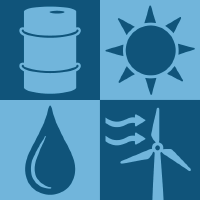Topic Editors



Sustainable Recycling and Reuse of Industrial By-Products or Waste from Geo-Resource Exploitation
Topic Information
Dear Colleagues,
Recycling waste generated by the industrial exploitation of georesources could enhance the utilization of the useful minerals they contain, such as rare earth elements (REEs), critical raw materials (CRMs) and secondary raw materials. Consciously recovering quarry waste or reusing the waste produced by processing operations for georesources means considering them no longer as waste, but as secondary raw materials to be used in further production processes from the perspective of a circular economy; this thus enables vital objectives, such as the following, to be pursued:
- The recovery of mineral raw materials resulting in the opening of new markets;
- A reduction in landfills (up to their possible removal), resulting in soil dumping and a reduced impact on the landscape;
- A reduction of business burdens related to the disposal and generation of added value related to the sale of mineral concentrates directly from quarries.
Herein, this Topic aims to collect original research articles and review papers.
The scope of this Topic includes, but is not limited to, the following areas of interest:
- industrial waste management;
- secondary raw materials;
- exploitation of industrial by-products;
- natural deposits and recovery of critical metals from waste materials and landfills;
- innovative approaches for mineral exploitation;
- sustainability in industrial processing;
- sustainability in quarrying waste disposal.
Dr. Sossio Fabio Graziano
Dr. Rossana Bellopede
Dr. Giovanna Antonella Dino
Dr. Nicola Careddu
Topic Editors
Keywords
- quarry waste
- rare earth elements
- critical raw materials
- secondary raw materials
- environmentally-friendly materials
- landfill disposal alternative
Participating Journals
| Journal Name | Impact Factor | CiteScore | Launched Year | First Decision (median) | APC | |
|---|---|---|---|---|---|---|

Materials
|
3.4 | 5.2 | 2008 | 13.9 Days | CHF 2600 | Submit |

Mining
|
- | - | 2021 | 15 Days | CHF 1000 | Submit |

Recycling
|
4.3 | 5.4 | 2016 | 20 Days | CHF 1800 | Submit |

Resources
|
3.3 | 7.7 | 2012 | 23.8 Days | CHF 1600 | Submit |

Sustainability
|
3.9 | 5.8 | 2009 | 18.8 Days | CHF 2400 | Submit |

MDPI Topics is cooperating with Preprints.org and has built a direct connection between MDPI journals and Preprints.org. Authors are encouraged to enjoy the benefits by posting a preprint at Preprints.org prior to publication:
- Immediately share your ideas ahead of publication and establish your research priority;
- Protect your idea from being stolen with this time-stamped preprint article;
- Enhance the exposure and impact of your research;
- Receive feedback from your peers in advance;
- Have it indexed in Web of Science (Preprint Citation Index), Google Scholar, Crossref, SHARE, PrePubMed, Scilit and Europe PMC.


